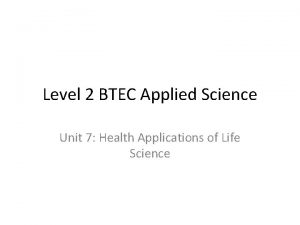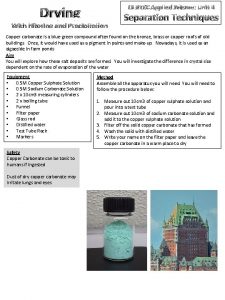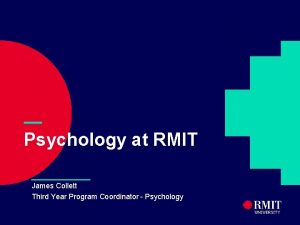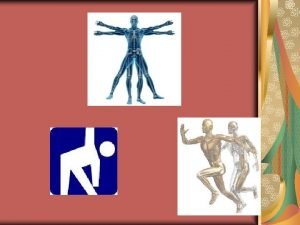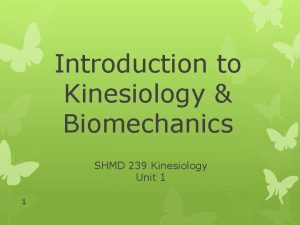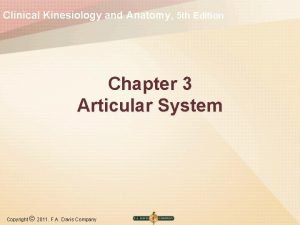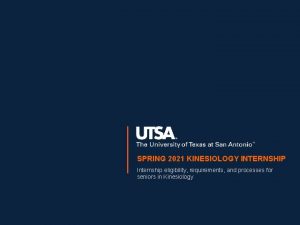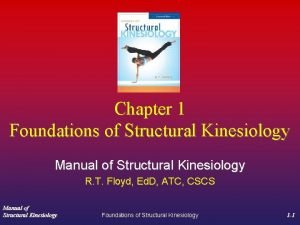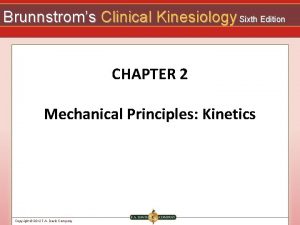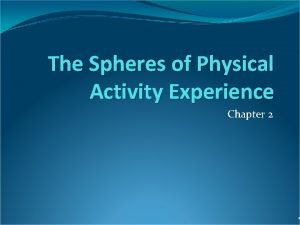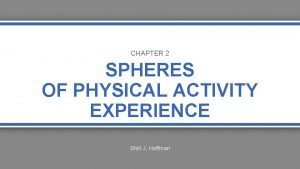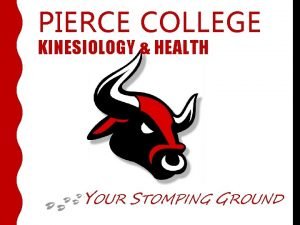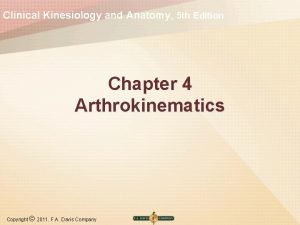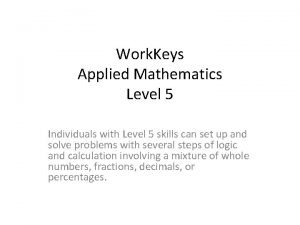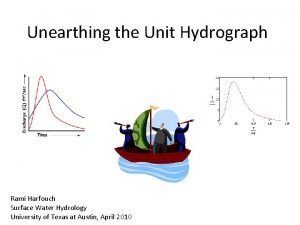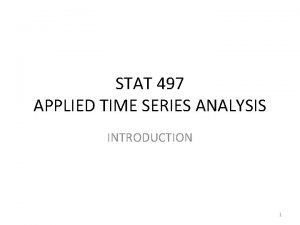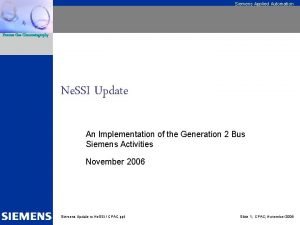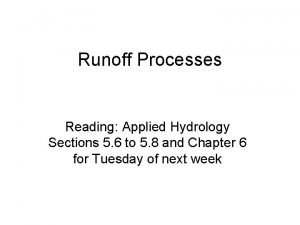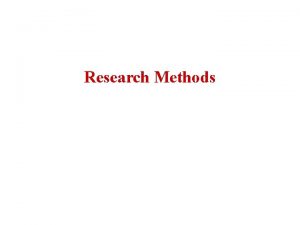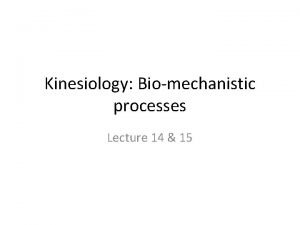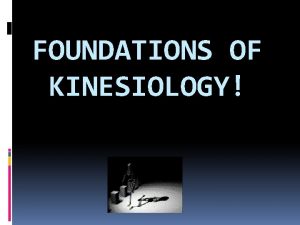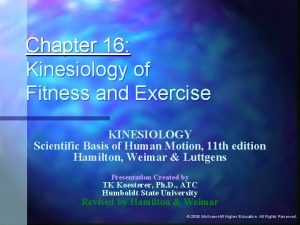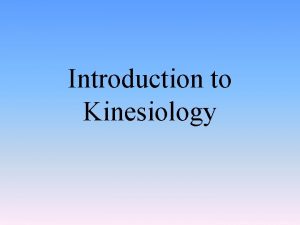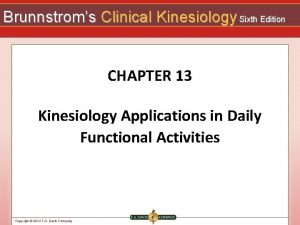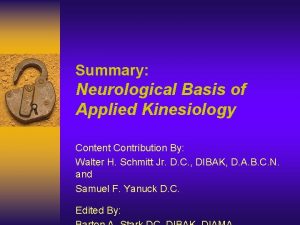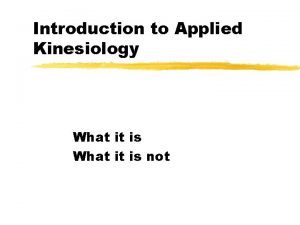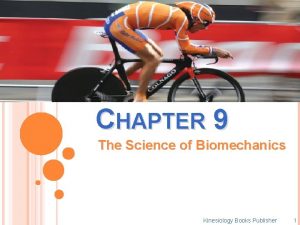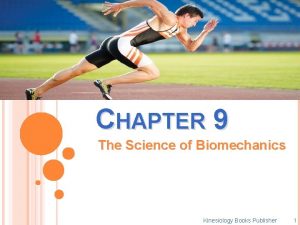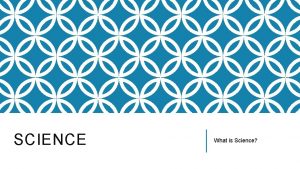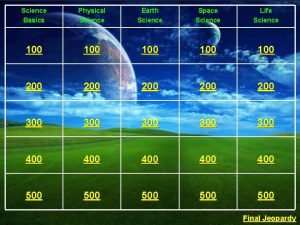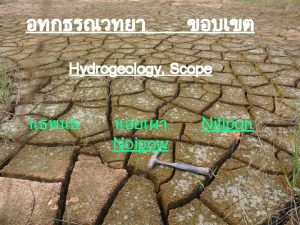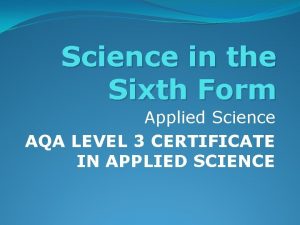What is Applied Kinesiology z Kinesiology y Science




















































- Slides: 52

What is Applied Kinesiology z. Kinesiology y. Science of movement y. What Physical Education is called today z. Applied Kinesiology y. Chiropractic Technique y. Other Practitioners

Foundational AK Skills - I Muscle Testing Challenge Therapy Localization 5 Factors of the IVF

Muscle Testing z. Basis of all other skills z. If you cannot properly muscle test, all other skills are of no value z. Muscle Testing according to a PRECISE PROTOCOL -ICAK Position Statement

What is muscle testing? z. Atrophy vs. Functional Neurology z. Kendall and Kendall y. Physical Therapists y. Polio y. Maximum isolation of individual muscle


z. Kendall and Mc. Creary y. Muscles, testing and function y 1949 y. Only in third edition

Two Kinds of Muscle Testing z“Orthopedic” muscle testing y. MUST test to FAILURE y. MAY test BILATERALLY y. Atrophy z“Reflex” muscle testing y. Only testing for a “LOCK” y. Very little force y. AK Muscle Testing

AK Muscle Testing z“Coordination” of the muscular system z. Inhibition / Facilitation

“Weak” vs. “Strong” z. Poor Terminology z. Inhibition vs. Facilitation z. Therefore. . .

Muscle Testing is: z. A window into the nervous system’s current state of control of the coordination of the musculoskeletal system.

How Do I Muscle Test? z. Proper body part placement



How Do I Muscle Test? z. Proper body part placement z. Proper stabilization

Latisimus Dorsi

How Do I Muscle Test? z. Proper body part placement z. Proper stabilization z. Proper line of drive

Latisimus Dorsi

Visualize the Muscle! z. Visualize the muscle!! z. Do NOT just memorize the muscle test z. To summarize this slide; z. VISUALIZE THE MUSCLE!!!

Latisimus Dorsi

Supraspinatus

Serratus Anterior

Middle Deltoid

Anterior Deltoid

Posterior Deltoid

Subscapularis

Infraspinatus

Teres Minor

Rhomboid

Levator Scapula

How Do I Muscle Test? z. Pull or push with GRADUALLY INCREASING force z. Patient can feel force and resist

Additional Considerations z. Consistent Timing z. Line of Drive - Visualize! z. Pain z. Crossing a Joint z. Leverage z. GRADUAL INCREASE IN PRESSURE SO PATIENT CAN FEEL IT & RESIST

Indicator Vs. Associated Muscles z. INDICATOR y“STRONG IN THE CLEAR” y. A normal muscle used to indicate the presence of a problem by testing “weak” when some challenge mechanism is applied to the body. z. ASSOCIATED y“WEAK IN THE CLEAR” y. A muscle that is weak due to some unknown dysfunction.

Challenge z. A testing procedure to determine the effect of some input, either physical, chemical or mental, on the function of a muscle.

Characteristics of Challenge z. Based on the idea that the body: yshould be able to accept a stimulus without disruption of the nervous system’s coordination of the muscular system z. Usually done by the Doctor y. Exception; Deep breath to move cranium z. When used to find a listing, y. Use an INDICATOR muscle - For precise vector

Challenge to find a listing, z. Use an INDICATOR muscle - For precise vector z. Associated muscle will “completely” strengthen y. Even if vector is just “in the ball park” z. Indicator muscle will: y“Partially” weaken if “in the ball park” y“Completely” weaken if the vector is precise!

Spinal Vs. Extremity Challenge z. SPINAL y. REBOUND CHALLENGE y. Adjust into weakness z. EXTREMITY y. DIRECT CHALLENGE y. Adjust into strength

Therapy Localization z. Second Skill z. George Goodheart, D. C. z. Not well understood z. It’s an “energy” thing

“I wish that all chiropractors could take in this basic principle of our science - that too much or not enough energy is disease. ” - D. D. Palmer, 1910

TL Example z. Patient has an inappropriately inhibited Pectoralis Major Sternal when Dr. does muscle test z. Patient then puts their fingers on the acupuncture Alarm Point for the liver meridian z. Dr. re-tests PMS muscle and finds it to be “strong”

Interpretation z. Step 1: Brain is inappropriately coordinating PMS muscle z. Step 2&3: Imbalance of the liver meridian’s energy is at least partly responsible for brain’s inappropriate coordination of PMS

TL’s Limitation z. It is called therapy LOCALIZATION z. It tells you WHERE the problem is LOCATED z. NOT what the problem IS!!!

Characteristics of TL z. Patient’s fingers z. Electromagnetic z. What muscle can be used? y. Associated y. Indicator

Special Considerations of Therapy Localization z. What if patient cannot reach area? y. Challenge z. Can the doctor TL? z. Hindrances to TL y. Dehydration y. Thick clothes y. Synthetic fabrics? ? ?

Therapy Localization and Muscle Testing z. Patients must not touch their bodies! z. Can doctors touch patient’s bodies? y. TL? y. Technique

Is this muscle a good muscle to use as an indicator? z“Muscle testing is inconsistent. ” z. Muscle Spindle Cells z. Golgi Tendon Organs

Autogenic Inhibition z. We can manipulate MSC’s & GTO’s z. Stretch ‘em to Strengthen z. Crunch ‘em to Weaken z. Therefore:

Is this muscle a good muscle to use as an indicator? z. If it does not inhibit normally (autogenic inhibition), z. It will not inhibit when a problem is challenged or TL’ed!! z. Always check this before using a muscle as an indicator.

Structural Balance z. Muscles move bones!


Structural Balance z. Muscle Spasm z. Antagonistic Weakness

AK Approach to Subluxation z. Muscle Imbalance

 Applied science vs pure science
Applied science vs pure science How to answer what is your favorite subject
How to answer what is your favorite subject Lonestar nursing prerequisites
Lonestar nursing prerequisites Btec applied science level 3 unit 7
Btec applied science level 3 unit 7 Universal prevention curriculum
Universal prevention curriculum Automotive engineering esslingen
Automotive engineering esslingen Importance of applied science
Importance of applied science Btec applied science level 3 unit 4
Btec applied science level 3 unit 4 The fu foundation school
The fu foundation school Applied medical science swansea
Applied medical science swansea Applied principles of horticultural science
Applied principles of horticultural science Wjec applied science single award
Wjec applied science single award Uc college of engineering and applied science
Uc college of engineering and applied science Rmit criminology and psychology
Rmit criminology and psychology Applied science projects
Applied science projects What is kinesiology
What is kinesiology Stabilization in kinesiology
Stabilization in kinesiology Biomechanics kinesiology definition
Biomechanics kinesiology definition Degrees of freedom kinesiology
Degrees of freedom kinesiology Inertia in kinesiology
Inertia in kinesiology University of central florida health care administration
University of central florida health care administration Adbominals
Adbominals Utsa kinesiology internship
Utsa kinesiology internship Canadian kinesiology alliance
Canadian kinesiology alliance Angular motion kinesiology
Angular motion kinesiology Manual of structural kinesiology 18th edition
Manual of structural kinesiology 18th edition Brunnstrom's clinical kinesiology 7th edition
Brunnstrom's clinical kinesiology 7th edition Physical activity experience
Physical activity experience Spheres of kinesiology
Spheres of kinesiology Pierce college kinesiology
Pierce college kinesiology Hanging derived position
Hanging derived position Stc kinesiology
Stc kinesiology Canadian kinesiology alliance
Canadian kinesiology alliance Clinical kinesiology and anatomy 6th edition
Clinical kinesiology and anatomy 6th edition Kinesiology books publisher
Kinesiology books publisher Social science vs natural science
Social science vs natural science Main branches of natural science
Main branches of natural science Natural and physical science
Natural and physical science Anthropology vs sociology
Anthropology vs sociology Think central k5
Think central k5 Tragedy of the commons
Tragedy of the commons Julie lundquist
Julie lundquist Soft science definition
Soft science definition As a laboratory assistant you measure chemicals
As a laboratory assistant you measure chemicals Van hall larenstein university of applied sciences
Van hall larenstein university of applied sciences Vaasa university of applied sciences
Vaasa university of applied sciences Jukebox mc stories
Jukebox mc stories Applied hydrology
Applied hydrology Centura 5200
Centura 5200 Strong stationarity
Strong stationarity Applied automation gc
Applied automation gc Scs method
Scs method Applied research meaning
Applied research meaning



